
Rubble Women
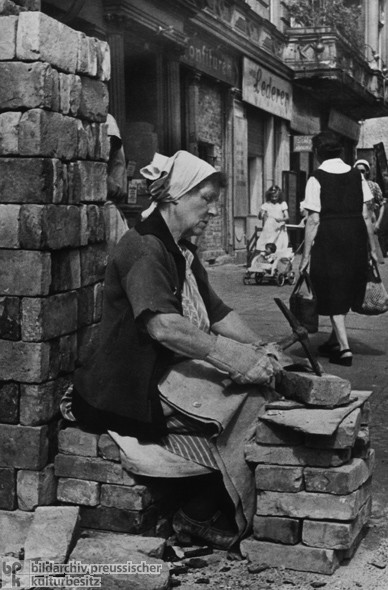
After buying their first boat, most people would become passionate about navigation or sail plans and suchlike. In my case, I became passionate about “Rubble Women”! We had bought the boat in Germany and had such a good experience and met so many nice people that I was ashamed of how little I really knew about Germany. I was witnessing the German economic miracle at first hand and wanted to know more about life immediately after the war, contemporaneous with my life! Digging around the period of German Reconstruction, I unearthed the rubble women.
The devastating air raids on German towns and cities had left homes, factories and infrastructure destroyed on an unimaginable scale. In May 1945 Germany’s cities were buried under an estimated 400 million cubic metres of rubble. Millions of people were milling about the country, adding to the general state of confusion, chaos and human misery. As there was a shortage of able-bodied men, women between 15 and 50 years of age were ordered to participate in the post war clean-up.

I zoomed in on one particular woman in the photograph and tried to imagine her life on a day to day basis.
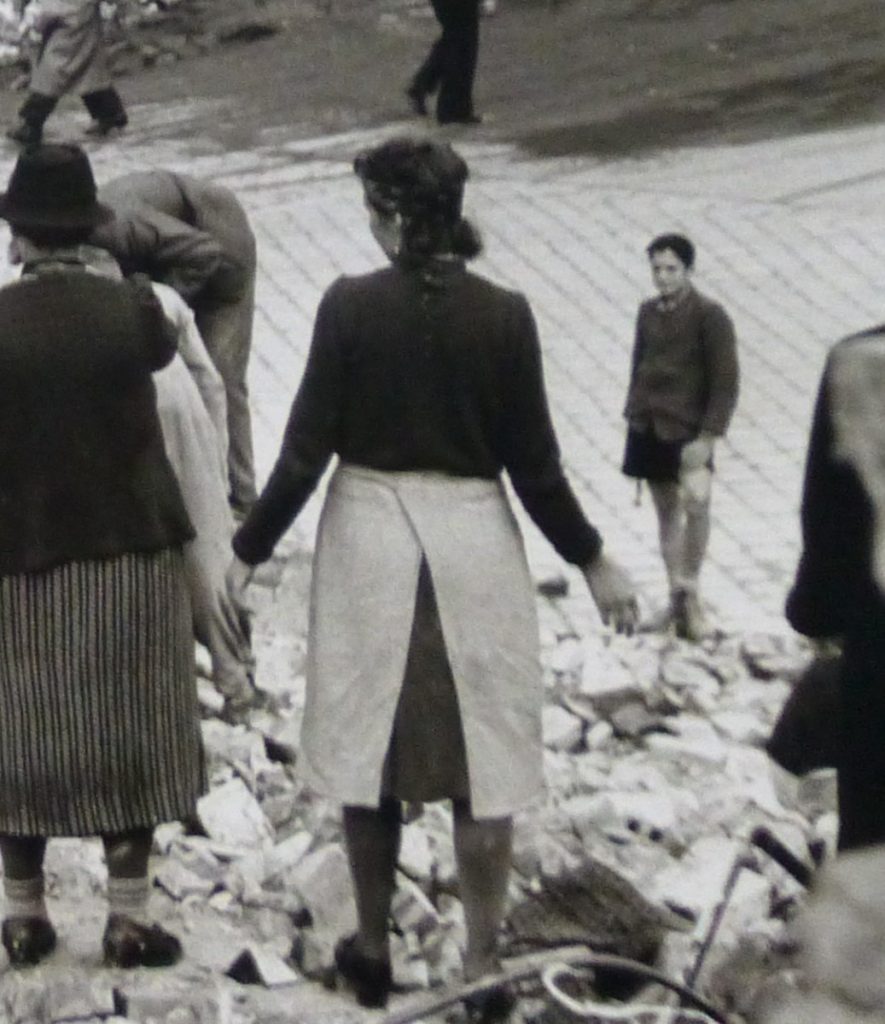
I created a facsimile scrapbook for her. I imagined that this woman might have made something like this for her grandchildren to give them an idea of scraping a living in the years after the war.
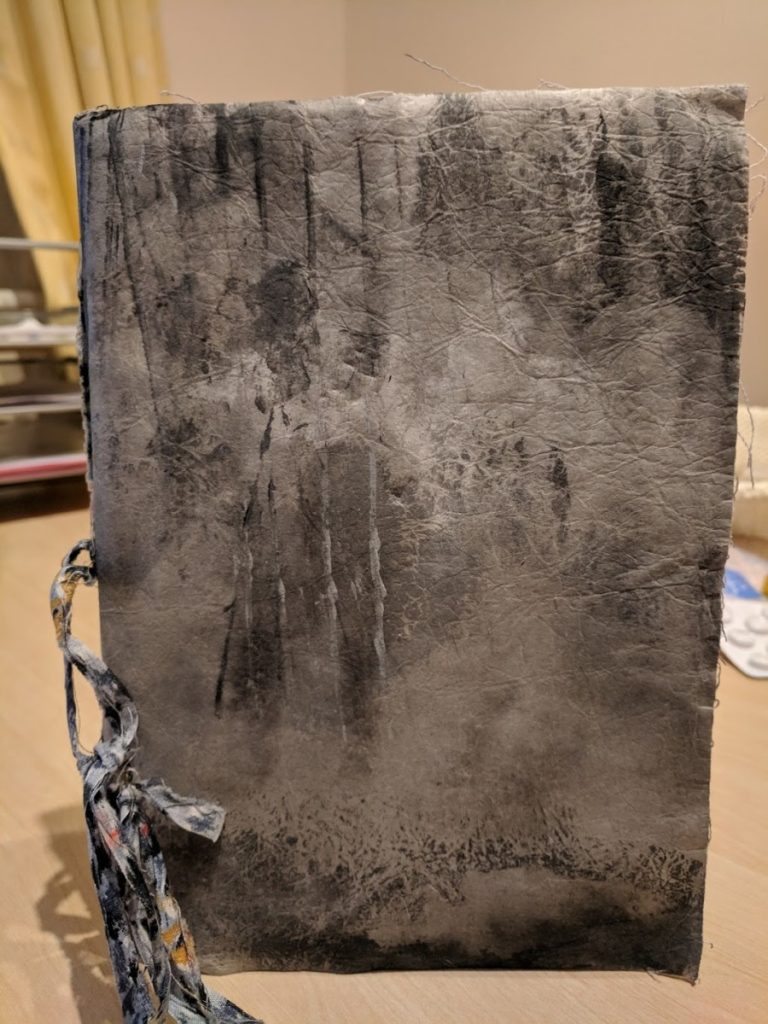
As I read and researched further, I uncovered more and more about this apocalyptic existence. I watched rubble films:
https://www.bfi.org.uk/news-opinion/news-bfi/features/cinema-rubble-movies-made-ruins-postwar-berlin
I read first-hand accounts and here a few fragments:
- “there were thousands of us living in the debris.”
- “the silence of ruins is the breathing of the dead.”
- “it was the 1st time I’ve ever been woken up by the feeling of snow on my skin.”
- “we had lost homes, security, landmarks, networks and community.”
- “we had no points of reference; the infrastructure of our lives was destroyed.”
- “the transport system was largely at a standstill and electric and gas supplies were cut. “
I felt so overwhelmed by the veracity of these accounts, I hardly knew what to choose for the scrapbook.
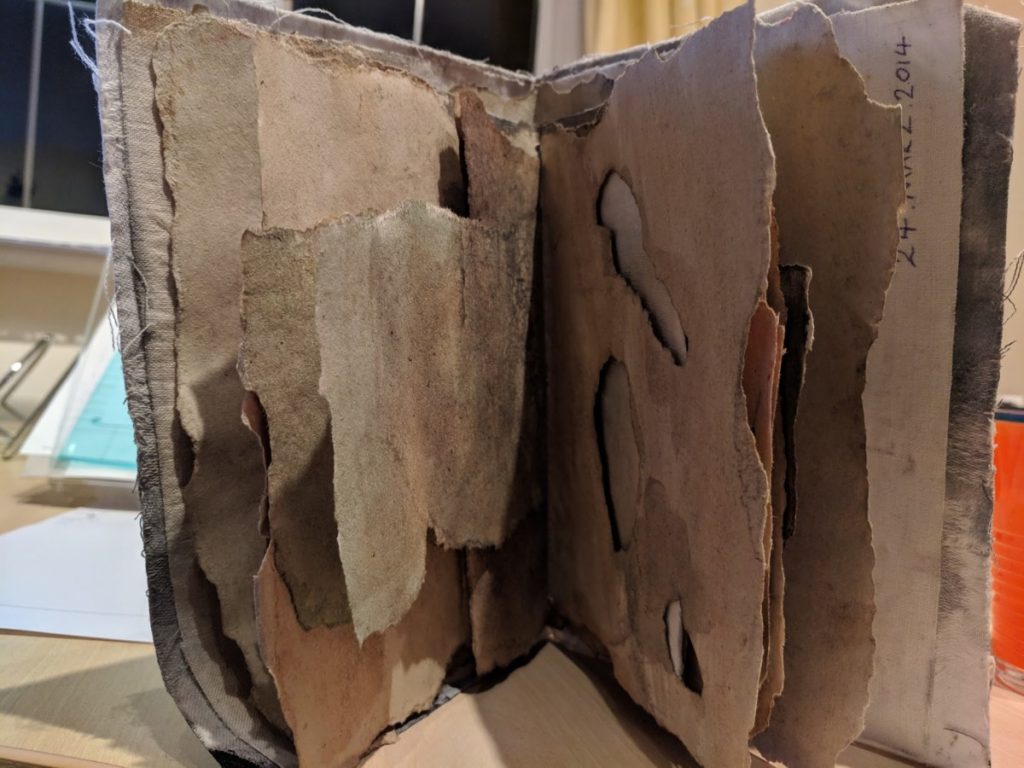
The most amazing thing comes later in my rubble saga – the very first entry in the scrapbook gets written by a real-life rubble woman! See the Würzburg entry later in the account.
Next up, I used my evolving embroidery skills to make a picture that would have the look and feel of a broken and desolate city.
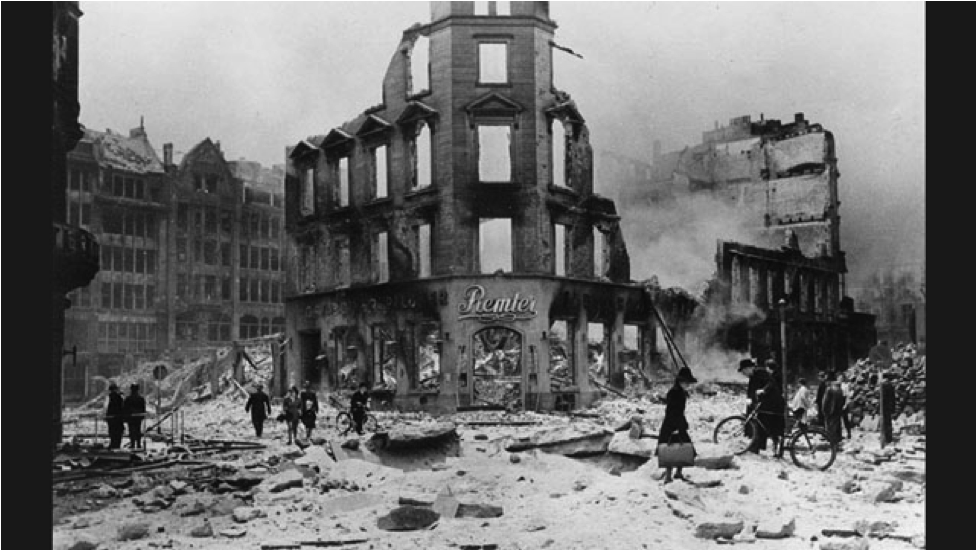
Photo 7 MK craft work
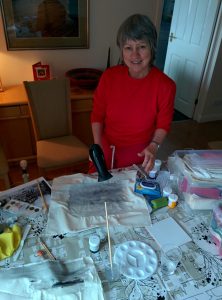
This passion for rubble led me to design holiday trips to Würzburg and Dresden, two cities that had been particularly devastated by air raids. The visit to Dresden really deserves a chapter all of its own as we were there on the 13th/14 February 2015 which was the 70th anniversary of the raid. The civic and religious commemorations were deeply moving. A human chain wove round the city centre to commemorate the exact time when the first bombers flew over the city in 1945.

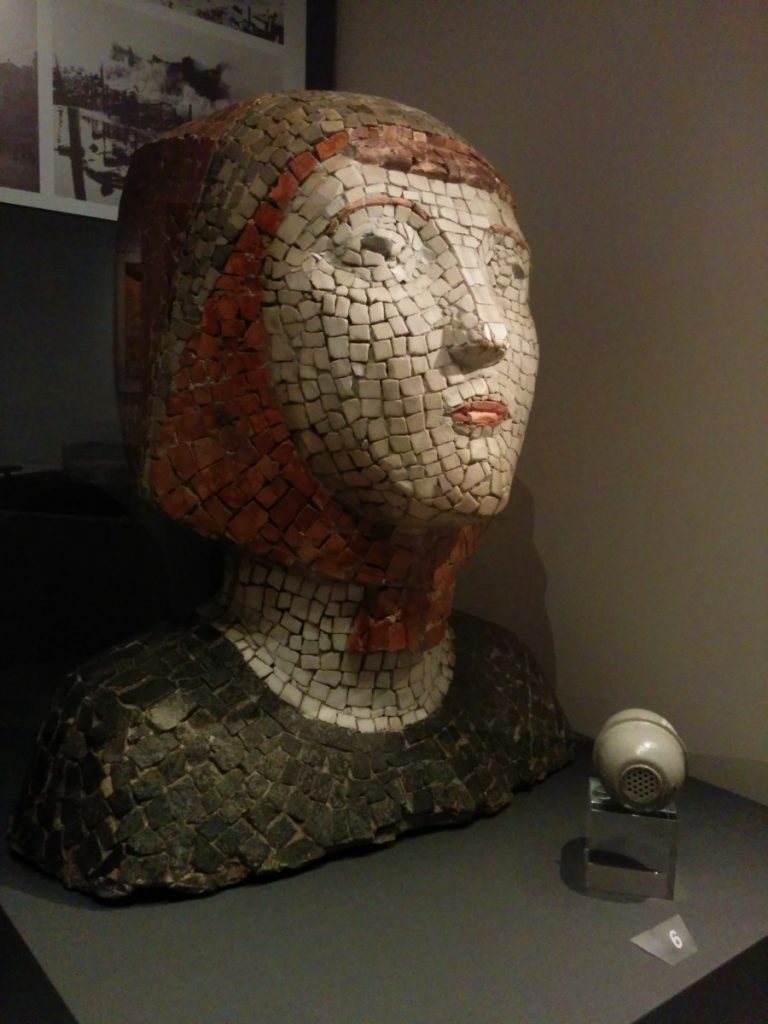
These pictures show a bust of a rubble woman and the following caption makes a poignant read.
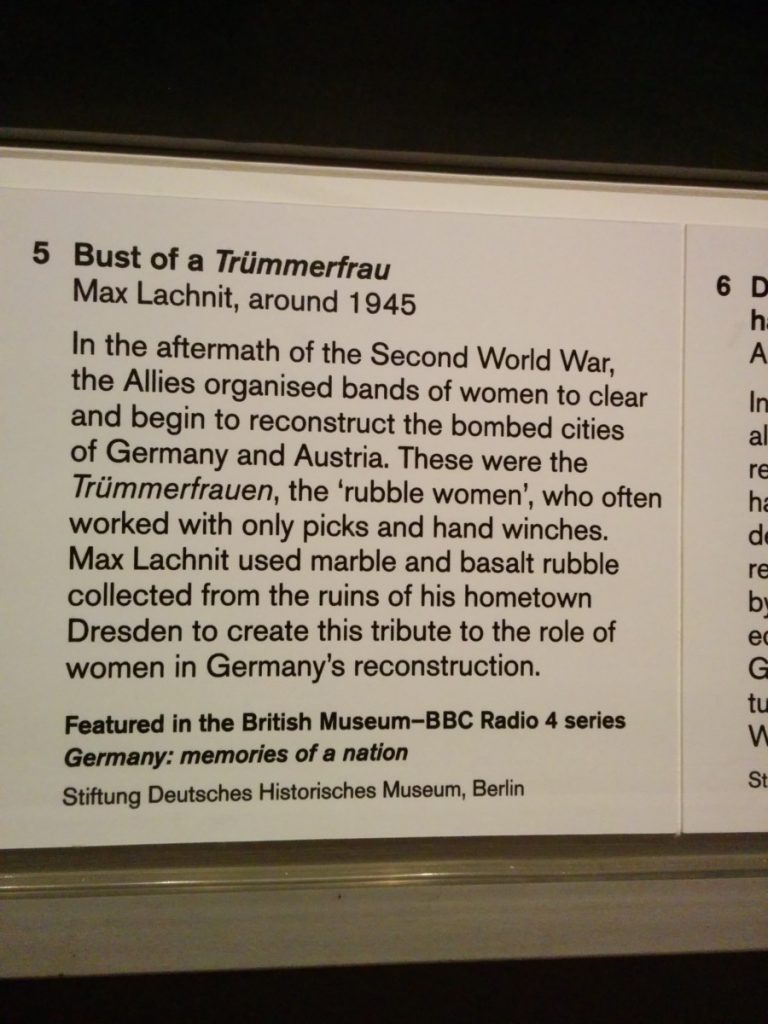
We visited the former abattoir in which American soldiers were imprisoned and which was the setting for Kurt Vonnegut’s novel “Slaughterhouse Five.” He actually spent the night of the 13/14 February 1945 in this building and emerged to the fire-ball that was Dresden.
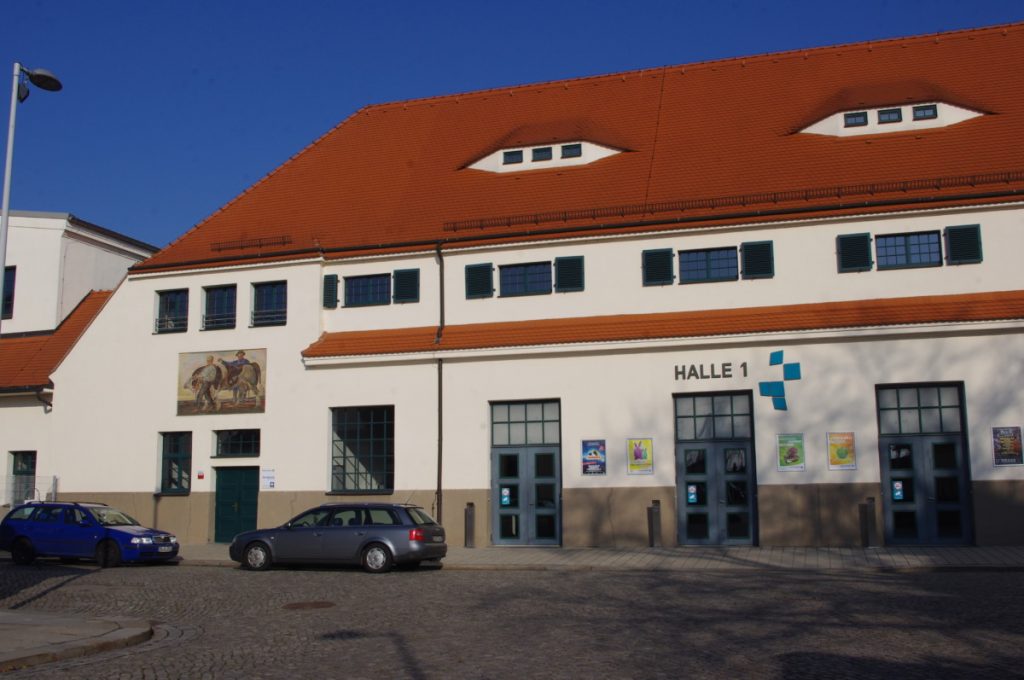
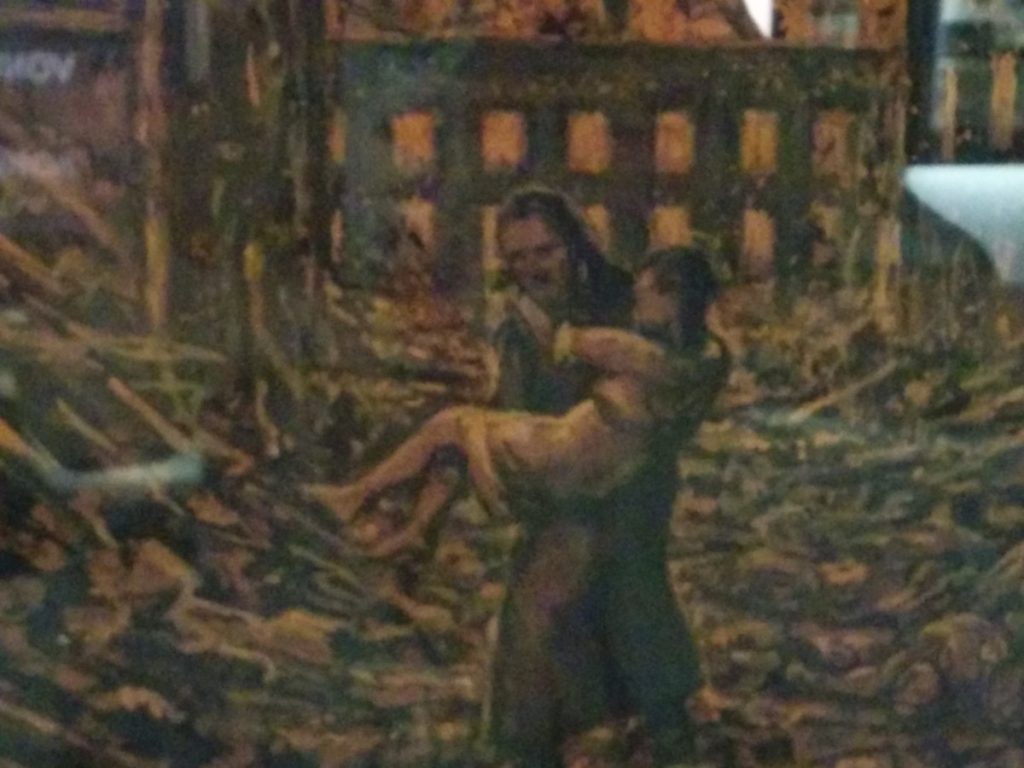
As for my own history, Tuesday, 25 March 2014 was truly a Red-Letter Day!

With the help of my lovely German friend Brigitta, I attended a reunion in the town hall in Würzburg of the rubble women who had helped rebuild the city in 1945.

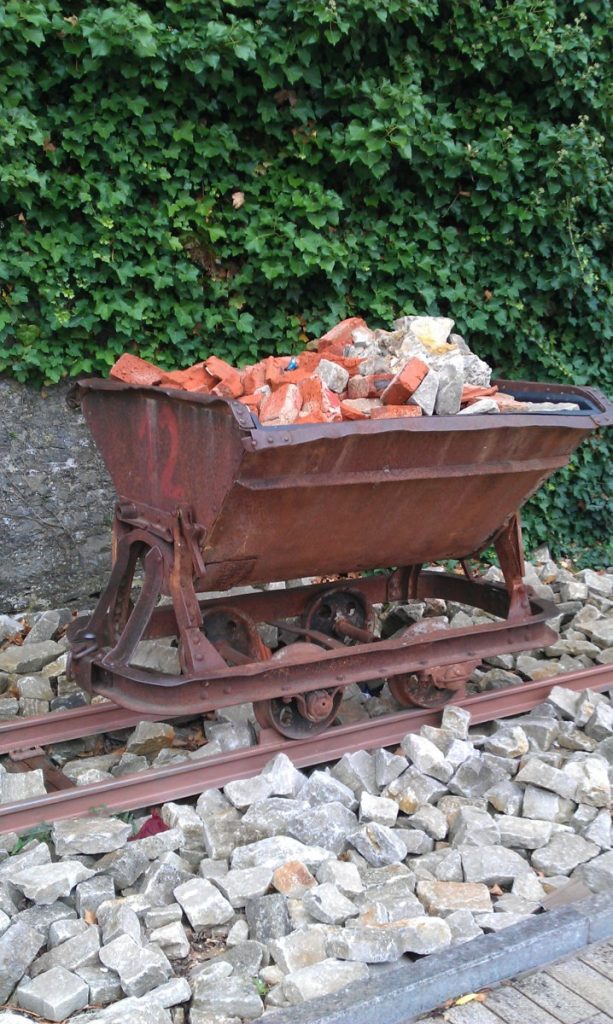
I had photographed the wagon which commemorates their work and now here I was having tea with the actual women who had filled the original wagon with bricks!
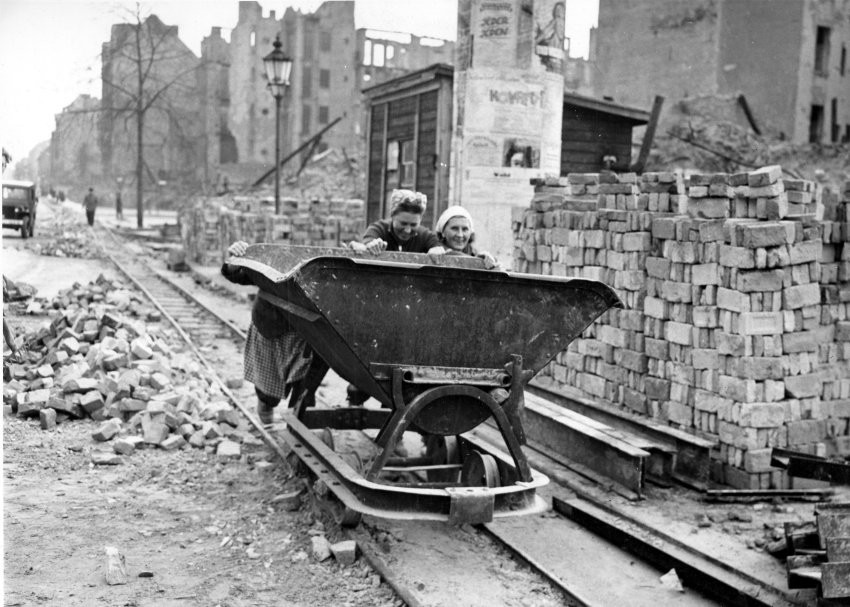
Finally, and this helped to bring the rubble story to a close, we were invited to have coffee next day with a real-life rubble woman! The delightful Frau Moser was still living in the flat over the family bakery which she and her brothers had rebuilt from the rubble.
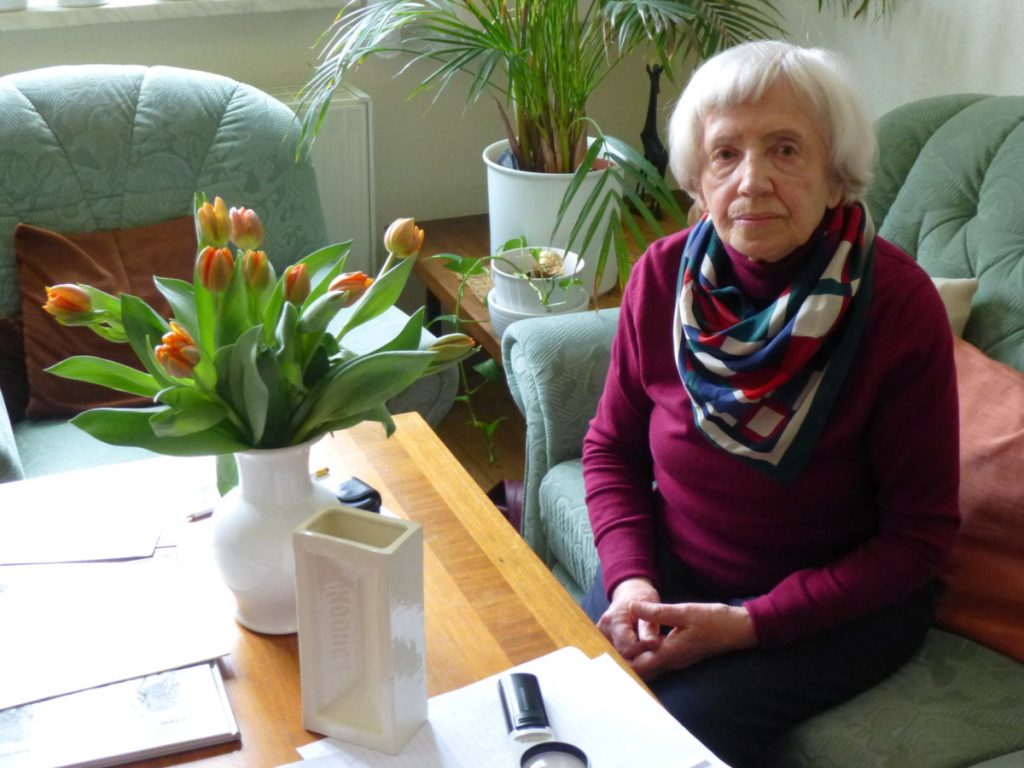

This photograph of their destroyed home and livelihood still hangs in their living room.
(Ps Yes, I do know of the work of Leonie Treber, and her book “Mythos Trümmerfrauen.” Just let me pile up my own view of history’s pebbles!)
